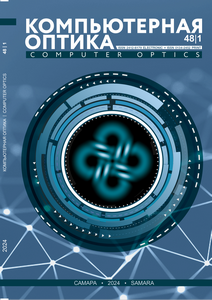Recent news
Merry Christmas and Happy New Year!
Dec 29, 2025
Intelligent methods for natural data analysis: application to space weather
The paper describes methods for detecting anomalies in geophysical monitoring data. This work studies a highly relevant class of problems in this area, aimed at creating methods for space weather forecasting.
The negative impact of space weather anomalies on human health and practically all modern infrastructure objects requires the development of methods and the creation of effective means of detecting anomalies. Threshold wavelet filtering methods widely used for data analysis and anomaly detection allow one to obtain fairly accurate estimates using a “greed” strategy, even in the case of incomplete noise data. With this approach, the signal is estimated by isolating coherent structures.
But these methods have high computational complexity, failing to provide accurate estimates when the signal-to-noise ratio is low. For such signals, we propose using adaptive probabilistic thresholds. Threshold function parameters are introduced that make it possible to estimate the variability of the process, suppress noise, and detect nonstationary features of different time-frequency structures.
The paper also considers ways to combine threshold wavelet filtering with neural networks of the NARX and Autoencoder architectures. Schemes for the implementation of such approaches in the problems of detecting space weather anomalies are proposed. Using the problem of detecting ionospheric anomalies as an example, the efficiency of combining threshold wavelet filtering with the NARX network is shown. The efficiency of network sharing an Autoencoder with adaptive wavelet threshold filtering is shown in the problem of anomaly detection in cosmic ray flux intensity data.
Full text is available at link.
Citation: Mandrikova OV. Intelligent methods for natural data analysis: application to space weather. Computer Optics 2024; 48(1): 139-148. DOI: 10.18287/2412-6179-CO-1367.

